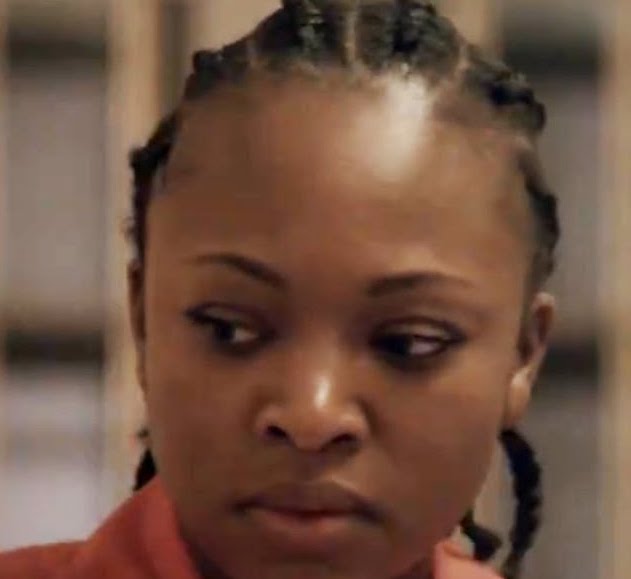Beyond the Frame: Exploring the Power of Cinematic Composition

Beyond the Frame: Exploring the Power of Cinematic Composition
The silver screen. A seemingly simple rectangle, yet within its borders lies a universe of storytelling possibilities. Masterful filmmaking isn’t just about the plot or the performances; it’s intricately woven into the very fabric of its visual language – cinematic composition. This article delves beyond the immediate frame, exploring how deliberate choices in visual arrangement shape our emotions, guide our gaze, and ultimately, elevate a film from good to unforgettable.
The Silent Storyteller: Composition’s Unsung Power
Before a single word is spoken, before a note of music is played, the composition of a shot already speaks volumes. It’s a silent storyteller, subtly influencing our perception of characters, setting the mood, and foreshadowing narrative developments. Consider the classic Western showdown: two figures facing each other in the middle of a wide, desolate landscape. The vast emptiness emphasizes their isolation, the tension ratcheting up with every beat of the silent score. This is the raw power of composition at work.
Key Elements of Cinematic Composition: A Visual Vocabulary
Several key techniques work in concert to create a powerfully composed shot. Understanding these elements unlocks a deeper appreciation for the artistry of filmmaking:
-
Rule of Thirds: This classic guideline suggests placing key elements off-center, creating a more dynamic and engaging composition than centering everything. Think of the subject’s eyes as one of these points; it naturally directs the viewer’s focus.
-
Leading Lines: These are lines within the frame that naturally guide the viewer’s eye towards a specific point of interest. Roads, fences, rivers – all can act as powerful leading lines, drawing us deeper into the scene.
-
Framing: Using elements within the scene to frame the subject, such as doorways, arches, or even branches, can create a sense of depth, isolation, or even enclosure, depending on the context.
-
Negative Space: The empty space surrounding the subject is just as important as the subject itself. Negative space can create a feeling of loneliness, vastness, or even anticipation.
-
Symmetry and Asymmetry: Symmetrical compositions often convey order and balance, while asymmetrical shots can be more dynamic and unexpected, reflecting the chaos or tension of a scene.
| Technique | Effect | Example |
|---|---|---|
| Rule of Thirds | Balanced, engaging composition | Placing a character off-center |
| Leading Lines | Guides the viewer’s gaze | A road disappearing into the distance |
| Framing | Creates depth, isolation, or enclosure | A character framed by a doorway |
| Negative Space | Emphasizes subject, creates feeling | A lone figure in a vast landscape |
| Symmetry/Asymmetry | Order vs. dynamism | Mirror image vs. off-kilter composition |
Beyond the Basics: Exploring Advanced Techniques
The mastery of cinematic composition extends beyond the fundamental elements. Experienced filmmakers employ sophisticated techniques to create truly captivating visuals:
-
Depth of Field: Manipulating the focus to create a shallow depth of field (blurring the background) can isolate the subject and draw attention to specific details. A deep depth of field, on the other hand, allows the viewer to take in the entire scene.
-
Shot Composition and Editing: The relationship between individual shots and their editing is crucial. The juxtaposition of shots with contrasting compositions can heighten dramatic effect or underscore a thematic shift.
-
Camera Angles and Movement: The camera’s position and movement (panning, tilting, tracking) significantly impact the viewer’s experience. High-angle shots can make a character seem vulnerable, while low-angle shots can convey power and dominance.
The Emotional Impact: How Composition Shapes Our Feelings
Cinematic composition isn’t simply about aesthetics; it’s deeply intertwined with emotion. A tightly framed close-up can amplify intimacy and vulnerability, while a wide shot can evoke a sense of isolation or insignificance. The interplay of light and shadow, color palettes, and the arrangement of elements within the frame all contribute to the overall emotional impact of a scene.
Conclusion: Seeing Beyond the Frame
The art of cinematic composition is a subtle but powerful force shaping our cinematic experiences. By understanding the principles behind its techniques, we become more attuned to the director’s vision, appreciating the conscious choices made to create not just images, but emotions, narratives, and lasting impressions. Next time you watch a film, look beyond the surface, and observe how the careful crafting of each shot contributes to the overall impact of the story. The power of cinematic composition lies not just within the frame, but in its ability to transcend it, connecting us deeply with the world on screen.

Additional Information
Beyond the Frame: A Deeper Dive into Cinematic Composition’s Power
The concept of “Beyond the Frame” in cinematic composition extends the analysis beyond the immediately visible image, acknowledging the powerful influence of implied space, narrative suggestion, and the viewer’s active participation in constructing meaning. While the rule of thirds, leading lines, and other compositional techniques are crucial, understanding the “beyond” adds layers of sophistication and impact to filmmaking and visual storytelling.
1. Implied Space and Narrative Expansion:
The frame itself acts as a window, deliberately excluding vast amounts of information. This exclusion, however, is far from arbitrary. What lies beyond the frame actively contributes to the story’s narrative depth and emotional resonance. Consider Alfred Hitchcock’s use of implied space in Psycho. The restricted framing during the shower scene, coupled with the audience’s awareness of what isn’t shown (the killer’s full body, precise movements outside the immediate frame), generates heightened suspense and horror. The unseen amplifies the seen, crafting a powerful experience.
This technique is powerfully utilized in documentaries as well. A shot of a single, worn shoe in a refugee camp, leaving the rest of the desolate landscape outside the frame, communicates volumes about poverty, displacement, and individual suffering far beyond what a wider shot could achieve. The implied context is far more impactful than explicit representation.
2. The Gaze and the Viewer’s Agency:
Cinematic composition frequently directs the viewer’s gaze, manipulating their attention and emotional engagement. This is not passive consumption; the audience actively participates in constructing the narrative meaning. A character looking off-screen invites the viewer to follow their gaze, anticipating what lies beyond the frame and becoming complicit in the unfolding drama. This technique is strategically employed in thrillers and suspense films, creating a sense of shared anxiety and anticipation.
Furthermore, the strategic placement of characters within the frame influences how we perceive their relationships and power dynamics. A character positioned in the foreground, dominating the frame, projects authority and importance. Conversely, a character placed in the background, marginalized within the composition, suggests vulnerability or insignificance. This subtly shapes our understanding of the characters and their interconnectedness.
3. The Power of Negative Space:
Negative space—the areas within the frame that are not occupied by the subject—is frequently overlooked but crucial for effective composition. It doesn’t merely provide visual breathing room; it shapes the overall mood and emotional impact. Vast expanses of negative space can communicate loneliness, isolation, or the overwhelming scale of a landscape. Conversely, tight framing, minimizing negative space, can evoke claustrophobia, intimacy, or intense focus. Consider the stark beauty and loneliness conveyed in many landscape shots in Terrence Malick’s films, showcasing the effective use of vast negative space.
4. Breaking the Rules for Dramatic Effect:
While established rules of composition provide a solid foundation, skillful filmmakers often deliberately break these rules to achieve specific dramatic or emotional effects. A deliberately skewed or unbalanced composition can reflect a character’s internal turmoil or the chaotic nature of a scene. This controlled disruption of conventional aesthetics can be exceptionally powerful, showcasing the filmmaker’s mastery and artistic intent.
5. Technological Advancements and “Beyond the Frame” Techniques:
Modern filmmaking tools, such as CGI and virtual production, have further extended the possibilities of exploring “beyond the frame.” These technologies allow for the creation of entirely fictional environments and impossible perspectives, extending the implied space to near-limitless boundaries. The possibilities are vast, and we are seeing increasingly creative uses of this technological evolution, enabling filmmakers to build incredibly immersive and convincing worlds.
Conclusion:
Understanding “Beyond the Frame” requires moving beyond a purely technical analysis of visual elements within the frame. It involves considering the implied narrative, the viewer’s active role in interpretation, and the manipulation of space, both seen and unseen, to create a powerful and resonant cinematic experience. The analysis of what isn’t shown is equally, if not more, important than what is shown in achieving truly compelling filmmaking. A deep understanding of this principle is vital for anyone aiming to create truly effective and impactful visual storytelling.

